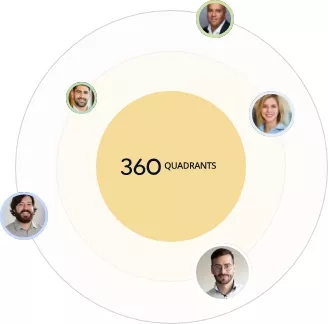Air defense systems are developed to ensure the security of personnel from aerial attacks such as ballistic missiles; fighters; Unmanned Aerial Vehicles (UAVs); Rockets, Artillery, and Mortar (RAM), etc. in battlefields or administrative and industrial installations. These systems comprise weapon systems, interceptors, fire control systems, radar, infrared sensors, electro-optic sensors, etc. Air defense systems are used to carry out surveillance activities, ground control interceptions, and issuance of long-range early warnings to protect civilians and defense personnel from weapons that operate at various speeds and altitudes. Air and ballistic missile defense, air-to-air combat, strategic long-range surveillance, and multiple other military applications are dependent on air defense system.
The air defense system market is projected to grow from USD 30.57 Billion in 2017 to USD 45.19 Billion by 2024, at a CAGR of 5.74% from 2017 to 2024. Increasing defense expenditure for the development of air and missile defense systems, changing nature of warfare, and growing geopolitical instabilities across the globe are some of the significant factors fueling the demand for air defense systems. The air defense system market has been segmented based on component, range, platform, type, and region.
Based on platform, the air defense system market has been segmented into land, naval, and airborne. The land segment is projected to lead the air defense system market in 2017 by accounting for a share of 71.6% of the market. Technological advancements taking place in short range, medium range, and guided missile systems are the factors driving the growth of the land segment of the air defense system market.
Based on range, the air defense system market has been segmented into long range air defense (LRAD) system, medium range air defense (MRAD) system, and short range air defense (SHORAD) system. The long range defense (LRAD) system segment is estimated to lead the air defense system market in 2017. Increasing attack threats from long range missile launches, asymmetric warfare, and intercontinental ballistic missiles across the globe are some of the factors fueling the growth of the long range defense (LRAD) system segment of the air defense system market.
Based on type, the air defense system market has been segmented into anti-aircraft system, missile defense system, and Counter Rocket, Artillery, and Mortar (C-RAM) system. The missile defense system segment is projected to lead the air defense system market during the forecast period.
The air defense system market has been studied for North America, Europe, Asia Pacific, the Middle East, and Rest of the World. The Asia Pacific region is estimated to lead the air defense system market in 2017. The Asia Pacific air defense system market is projected to grow at the highest CAGR during the forecast period. The growth of the Asia Pacific air defense system market can be attributed increased investments being made by countries such as China, India, Japan, South Korea, Taiwan, and Australia in the development of advanced air defense systems to strengthen defense systems of their combat zones to avoid and tackle threats arising from regional conflicts such as India-Pakistan border conflict, South China Sea Conflict, and non-conventional threats from terrorist groups such as ISIS.
The huge costs incurred in the development of advanced air defense systems are restraining the growth of air defense system market across the globe. Significant investments are required at different stages of the value chain of air defense systems (especially in the R&D, manufacturing, system integration, and assembling stages).
The products offered by various companies operating in the air defense system market have been listed in the report. The recent developments section of the report includes information on the strategies adopted by various companies between January 2012 and August 2017 to strengthen their position in the air defense system market. Saab AB (Sweden), Israel Aerospace Industries Ltd. (Israel), Lockheed Martin Corporation (US), and BAE Systems plc (UK), among others, are the major players operating in the air defense system market.
Innovators are vendors that have demonstrated substantial product innovations as compared to their competitors. They have an enhanced product portfolio. However, they do not have strong growth strategies for their overall businesses.
These are vendors with niche product offerings who have started to gain their foothold in the market. They do not have strong business strategies as compared to other established vendors. They are new entrants in the market and require more time before gaining significant traction in the market.
Air defense system market (global) competitive leadership mapping, 2017
Source: Press Releases, Expert Interviews, and MarketsandMarkets Analysis



